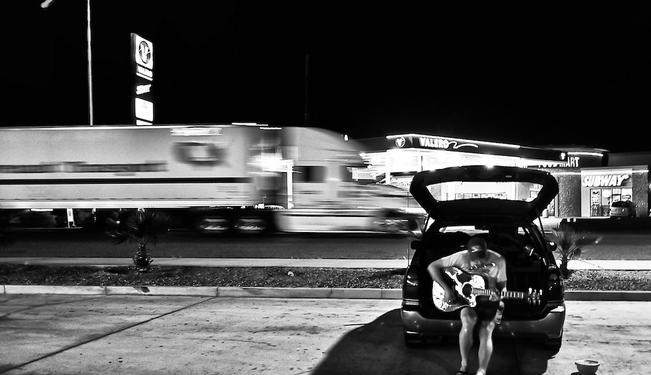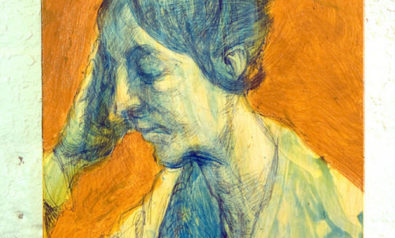Why is the road trip such an appealing American tradition?
It was 1933, Hoover was out, Roosevelt was in, and Harry L. Hopkins had sent the irascible Lorena Hickok on the road to report the state of affairs in a ragged and stricken America.“What I want you to do,” instructed Hopkins, “is to go out around the country and look this thing over.” That “thing” was the Great Depression.
One third of the nation was subsisting in a waste of soul-grinding poverty, and Hopkins’ job as director of the Federal Emergency Relief Administration was to lend states money for aid programs. But from his desk in Washington, Hopkins could not see into the deep recesses of New York City or the depressed valleys of North Dakota.
No statistics, no “social-worker angle”, Hopkins told Hickok. “Don’t ever pull your punches.”
From New York City on October 2, 1933, Hickok wrote: “There they are, all thrown together in a vast pit of human misery.”
From Minot, North Dakota on November 1, 1933: “All I can say is that these people have GOT to have clothing – RIGHT AWAY. … It’s COLD.”
Hickok drove and wrote the country from 1933 to 1935, documenting in graphic detail the human cost of an economic calamity. And when all was driven and written she had produced one of the most intimate portraits of the American people during the early years of the Great Depression.
It’s how she joined the ranks of those who road tripped into the center of American feeling, and discovered the nation within the vastness and chaos of its own borders.
If you want to understand America, you have to hit the road.
Tom Wolfe, Henry Miller, Robert Frank, Thomas Wolfe, John Steinbeck, and Jack Kerouac (just to name a few), knew that to decipher from the general babel a sincere national sentiment, you had to investigate the arteries of Route 66, US 50, and their smaller veins of travel.
Jack Kerouac and road-pal Neal Cassady excavated from the road a national ethos that defined the 50’s “Beat” generation. At 58 John Steinbeck got behind the wheel with Charley (his French poodle) to answer the question, “What are Americans like today?” Mark Twain escaped Huck Finn and Jim on the Mississippi River, an aquatic byway that cut through what T.S. Eliot called the “dark soul of America.”
There are other ways. Last year Google’s top five rising searches in the US were Rebecca Black, Google +, Hurricane Irene, Pinterest, and Ryan Dunn. Yahoo’s top five search terms were iPhone, Casey Anthony, Kim Kardashian (God save us all), Katy Perry, and Jennifer Lopez.
But Google will never tell you what strange fiber connects a New York City cabbie to a farmer in sunburned Indiana. Even in 1831– when two young Frenchmen crossed the Atlantic seeking this thing called democracy – the road trip was their modus operandi.
It took 37 gut-wrenching days at sea for Alexi de Tocqueville and Gustave de Beaumont to land in Newport, Rhode Island. It took them nine months to discover America. On horseback, steamboat, and foot they witnessed the egalitarian principle alive, rugged individualism in action, a wild frontier felled with ax and ambition, Native Americans dispossessed, and a black man beaten into insanity. In short, they saw the country.
From this experience de Tocqueville would write "De la Démocratie en Amerique” (“Democracy in America”), one of the most insightful works of American political theory. “I sought the image of democracy itself,” he wrote. “With its inclinations, its character, its prejudices, and its passions, in order to learn what we have to fear or to hope from its progress.” Perceiving the essential signs that would strike a path into the 20th century, de Tocqueville would in many ways prophesy the American civil war.
History is often thought of in salient moments and individuals – the fall of the Berlin Wall, Martin Luther King Jr., 9/11 – but it’s also the millions of unrecorded truths of people who live, love, and suffer that define a time and place. The way a southern waitress drawls her vowels, or the unique disappointed cheer of a crowd when a cowboy escapes a bull. Or as Hickok discovered, a forlorn boy outside Baltimore who walked twenty miles, “just stopping at every place and asking if they didn’t need somebody to work – at anything.”
A road trip is not merely the targeted sights of New York City and the Grand Canyon, but the fugitive moments that offer a kaleidoscope of life greater than the sum of its parts: guitar at 3 am at a rest stop outside Las Vegas, two excited girls seeing bison in Yellowstone’s parking lot, the steamrolled landscape of South Dakota, and California’s serpentine Route 1.
Cram together thousands of miles and faces and stories and an understanding begins to emerge. And for a brief, transitory moment, as you drive across the country, you become conscious of the immense scale of assembled humanity and all its intimate complexity. And then it’s gone.
To articulate the entirety of a nation and its people is to put Herculean effort to a Sisyphean task. The country is changing all the time. You will never drive the same road twice. But after 3,000 miles the national motto e pluribus unum (out of many, one) seems less hackneyed, less a political cliché, and begins to makes sense.
This kind of making-sense has nothing to do with presidents good or evil, celebrities beautiful and depraved, or the politics of the war on terror. The barbaric hoards of power gluttons and terrifying monomaniacs don’t count in this kind of national reckoning. Nor do the nation’s honored saints. A country is more than the memories of its angels and demons.It’s the lives of people whose names you don’t know – and will never learn.
But then again, you just might.
The views expressed in this article are the author's own and do not necessarily reflect Fair Observer's editorial policy.
Support Fair Observer
We rely on your support for our independence, diversity and quality.
For more than 10 years, Fair Observer has been free, fair and independent. No billionaire owns us, no advertisers control us. We are a reader-supported nonprofit. Unlike many other publications, we keep our content free for readers regardless of where they live or whether they can afford to pay. We have no paywalls and no ads.
In the post-truth era of fake news, echo chambers and filter bubbles, we publish a plurality of perspectives from around the world. Anyone can publish with us, but everyone goes through a rigorous editorial process. So, you get fact-checked, well-reasoned content instead of noise.
We publish 2,500+ voices from 90+ countries. We also conduct education and training programs
on subjects ranging from digital media and journalism to writing and critical thinking. This
doesn’t come cheap. Servers, editors, trainers and web developers cost
money.
Please consider supporting us on a regular basis as a recurring donor or a
sustaining member.
Will you support FO’s journalism?
We rely on your support for our independence, diversity and quality.







Comment